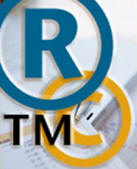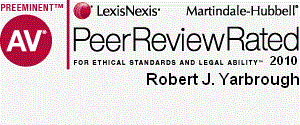Newsletter Issue 11 - January 2010
In this issue:
Teaching innovation.
Using trademarks where they do not belong.
PTO pilot program for green technologies.
Do patent applications require a separate written description?
Teaching innovation in the life sciences.
For the past 5 years, our partner Lawrence Husick has been
co-teaching the Managing Innovation course at the Whiting Graduate
School of Engineering at The Johns Hopkins University. Beginning in
the Summer Term 2010, he and Dr. Ed Addison will offer "Managing
Innovation in the Life Sciences" as a distance learning course in
the Hopkins Advanced Biotechnology Studies Program.
This course will explore innovation, invention, and value
creation as a driving force in the biotechnology or life sciences
enterprise and the ways in which managers should plan to take full
advantage of innovation as the only true competitive weapon for
long-term success. A special emphasis will be placed on innovation
as applied to life science applications (biotechnology, medical
devices, health care delivery, drug discovery, development and
packaging, bioinformatics, etc.). Topics include invention, ROI,
disruption, creative destruction, types of innovation, technology
brokering, organizational structures that foster innovation,
planning and managing for innovation.
Using trademarks where they do not belong.

Trademarks (and service marks) identify the source of products
and services, while trade names are short hand references to
businesses. Some company names are, indeed, used as trademarks; that
is, they identify the product or service of the owners. Two that
come to mind are Coca-cola® and Microsoft®. Proper trademark usage
requires placing your mark on the product itself, on a label,
packaging, or on other materials shipped with the product. But what
are the implications of placing your trademark on items that are not
associated with the product or service that they identify? And if
you do so, and your trademark rights are challenged, will those
items serve as evidence of trademark usage?
The Trademark Trial and Appeal Board addressed this issue in a
2008 case, 200 Kelsey Associates, LLC v. Delan Enterprises Inc. in
which the parties argued over whether the registrant, Delan, had
abandoned the use of the JONATHAN LOGAN mark used to identified
women's dresses and other clothing items. As evidence that it had
not abandoned the mark, Delan presented the Board with
advertisements, correspondence, invoices, purchase orders, computer
printouts all bearing the words "Jonathan Logan." In each instance,
the Board wrote that the evidence demonstrated that Jonathan Logan
was being used as a trade name, not a trademark: The Board observed
that "there was no evidence on behalf of respondents regarding the
practice of placing the JONATHAN LOGAN trademark on every item of
clothing sold by the "Jonathan Logan" company." As a consequence,
the Board determined that Delan had abandoned its trademark.
In other words, the trademark was being used to identify the
business and not the products designated by its federal
registration. The case teaches us that trademarks must be used in
connection with the products they identify. Otherwise, your
trademarks will not receive the protection of federal registration.
Adam Garson
PTO launches pilot program to accelerate patent review of green technologies.
The PTO announced a
pilot program to speed review of patent
applications for green technologies. A pending application can be
advanced in the review queue if the application falls within any of
several pre-approved technologies and if the applicant submits a
petition to 'make the application special.' The PTO is waiving
petition fees for the pilot program.
The 'green technologies' addressed include hydroelectric, solar,
wind, renewable biomass, geothermal, and municipal solid waste, as
well as the transmission and distribution of electrical energy from
these sources. Also addressed are technologies for reduction of
energy consumption and technologies for improvements to fossil fuel
power generation, including reduction of greenhouse gas emissions.
The pilot program is limited to the first 3000 applicants.
The full announcement appears at
74 Fed. Reg. 64666.
Robert Yarbrough
Do patent applications require a separate written description?
One of the requirements for obtaining a patent is to provide an
application that contains a very specific description of the
invention, or in the words of the patent statute:
"The specification shall contain a written description of the
invention, and of the manner and process of making and using it, in
such full, clear, concise, and exact terms as to enable any person
skilled in the art to which it pertains, or with which it is most
nearly connected, to make and use the same. . . ."
It is clear from the language that there is an "enablement"
requirement; namely that one skilled in the art must be enabled to
make and use what is defined by the claims of the patent. However,
there is controversy whether the above cited language also imposes a
separate "written description" requirement separate from the
"enablement" requirement, and if so, what the scope and purpose of
that "written description" requirement is. Due to this ambiguity,
some patents have been found invalid for failing to provide a proper
"written description" while others have not.
On December 7, 2009 the entire Federal Circuit reheard arguments
in the case of Ariad Pharmaceuticals, Inc. v. Eli Lilly & Co. to
address whether there is a separate "written description"
requirement and, if so, the proper interpretation of the "written
description" requirement for patent applications.
Proponents of a separate requirement, argued that the "written
description" requirement focuses on the breadth of patent claims to
ensure that applicants were fully in possession of the claimed
subject matter to prevent them from claiming more than they are
entitled.
Opponents, such as research universities and small biotechnology
companies, argue that it constrains their ability to profit from
research. For example, a significant amount of money and time is
devoted to patenting biotechnological inventions, such as nucleotide
sequences, where each sequence would have to be analyzed to satisfy
the "written description" rule. Such a barrier on patent procurement
would arguably thwart the incentive for innovation. Stay tuned.
Lawrence Husick

